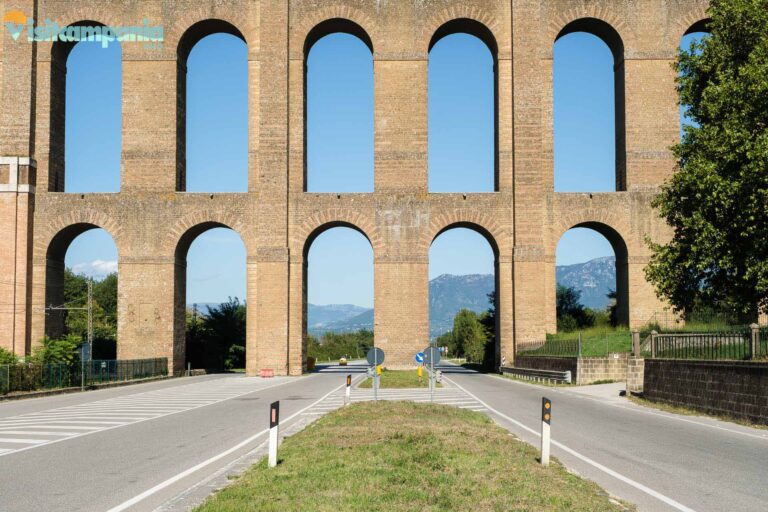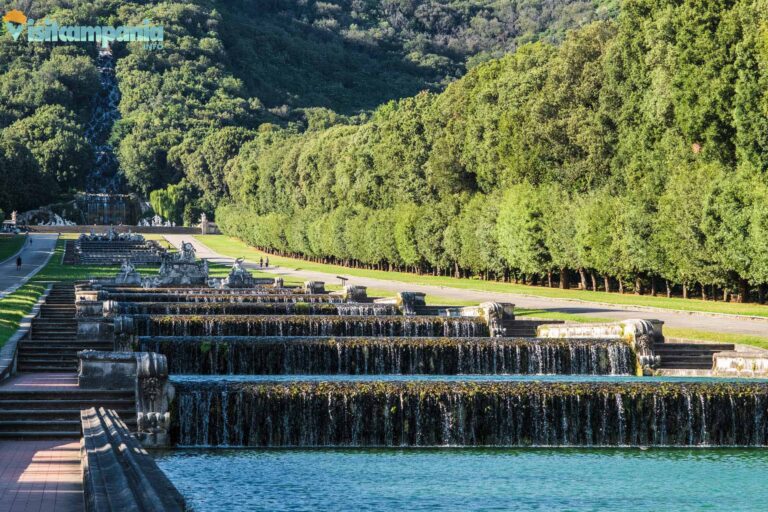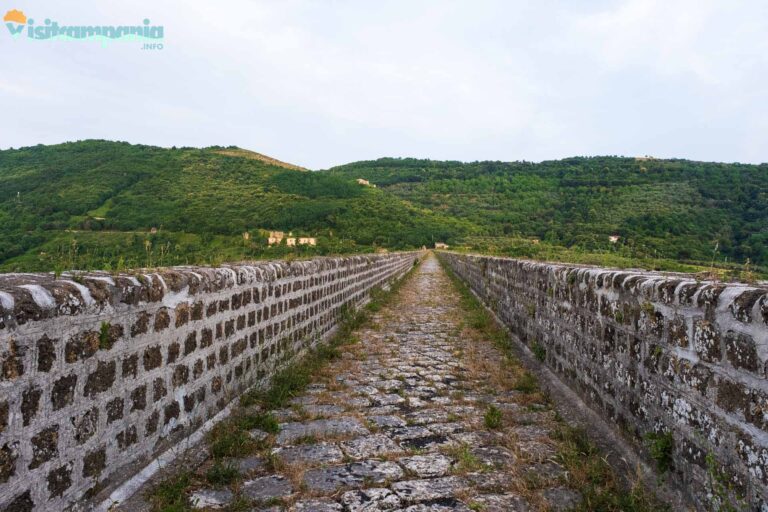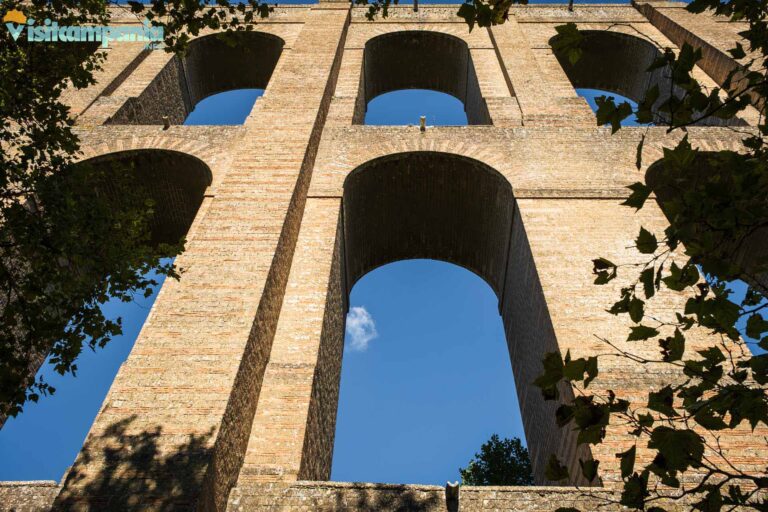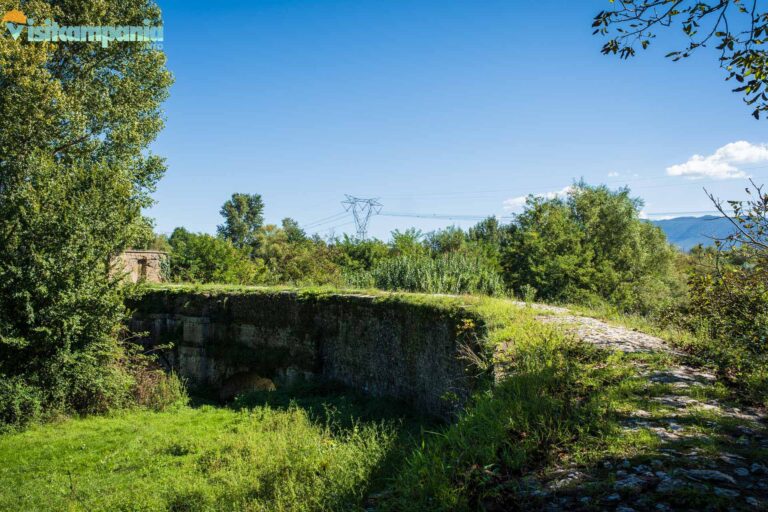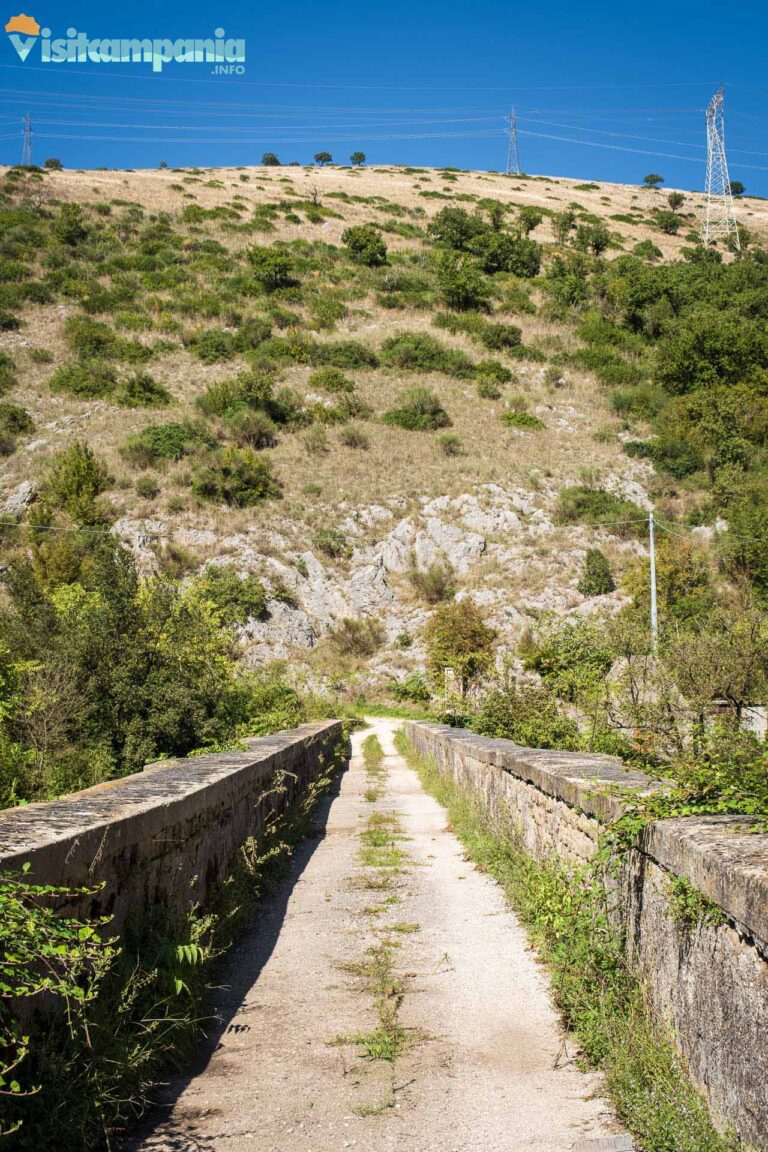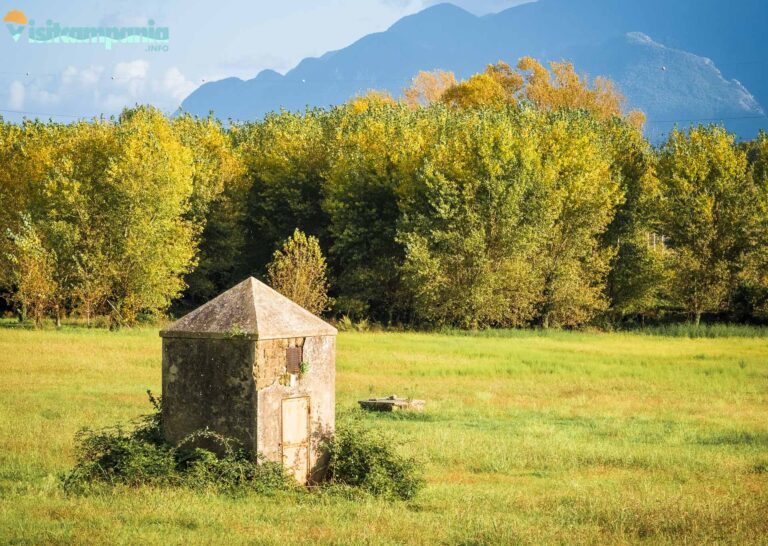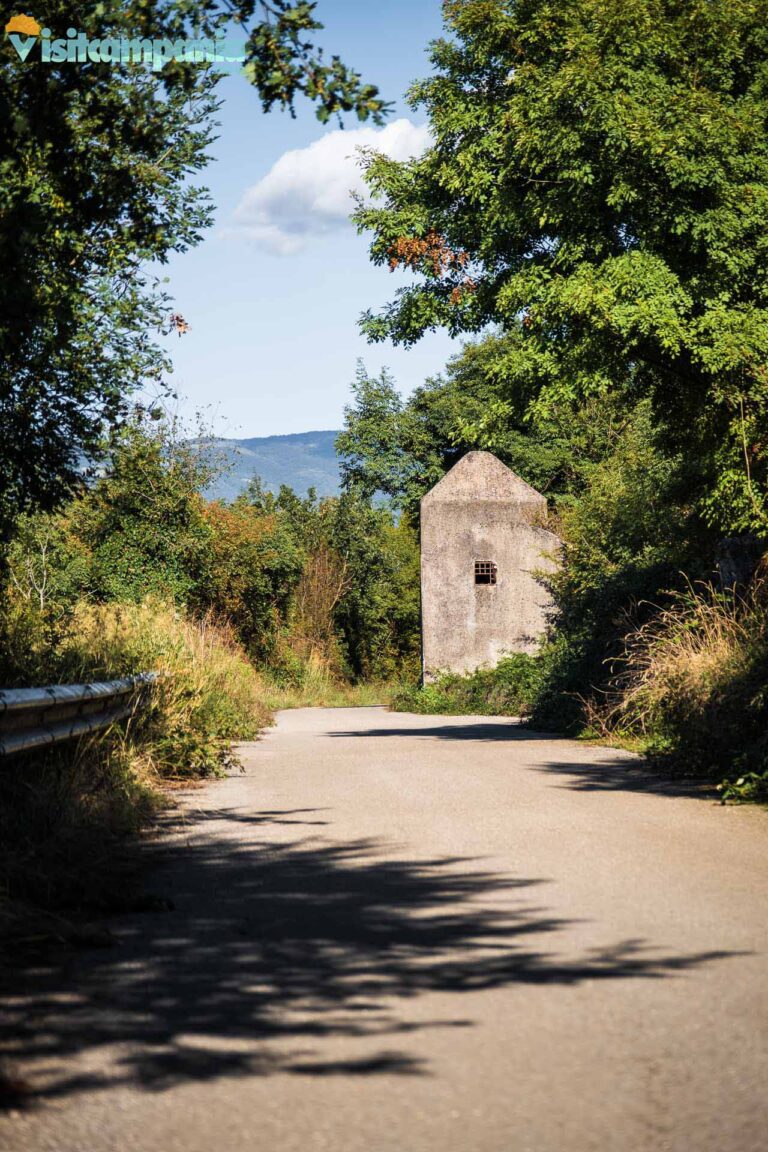What is the Carolino Aqueduct?
The Aqueduct and the Royal Palace of Caserta
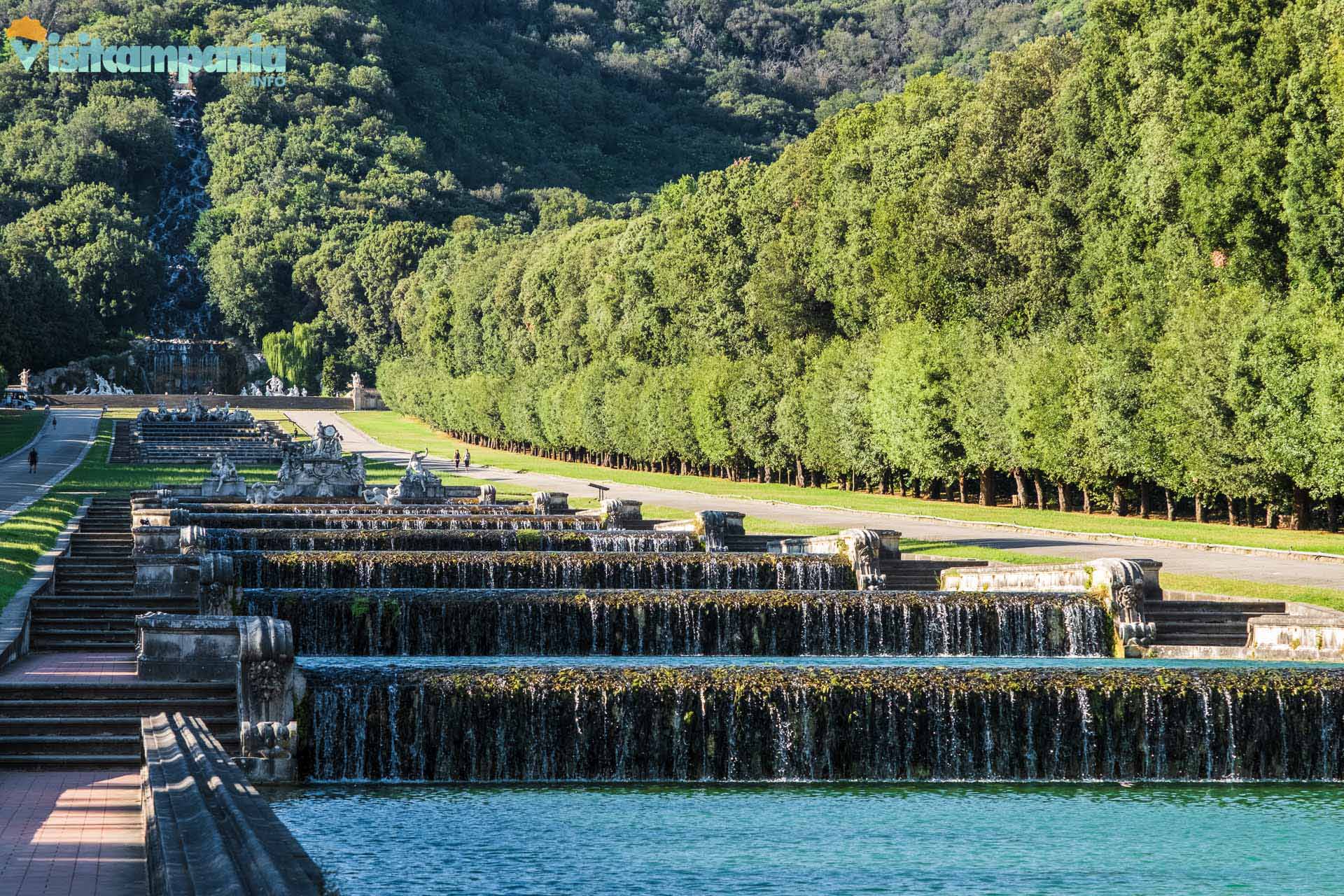
The Carolino Aqueduct, an extraordinary feat of 18th-century engineering , is inextricably linked to the beauty of the Royal Palace of Caserta . Designed by architect Luigi Vanvitelli at the behest of King Charles of Bourbon , this aqueduct had the task of bringing water to the Royal Park of the Palace. The work, begun in 1753, lasted 17 years and involved an expense comparable to over 150 million euros today. The aqueduct was officially inaugurated in 1762 and completed in 1770. Starting from the sources of the Fizzo, at the foot of Mount Taburno at 243 meters above sea level, the water travels 38 kilometers, crossing the territories of Benevento and Caserta until reaching the Palace , where it feeds the monumental waterfall and the complex system of fountains in the Park. Recognized as a UNESCO World Heritage Site in 1997 , the Carolino Aqueduct is today a symbol of the advanced ingenuity and construction skill of the Kingdom of Naples.
Some data on the structure of the aqueduct
The Carolino Aqueduct extends for 38 kilometers with an imposing conduit 1.2 meters wide and 1.3 meters high, interspersed with 67 square towers with pyramidal covers used for venting and inspection. Its slope, calibrated with extreme precision (0.5 millimeters per meter), allows the water to flow uninterruptedly from the sources of the Fizzo to the Royal Palace of Caserta.
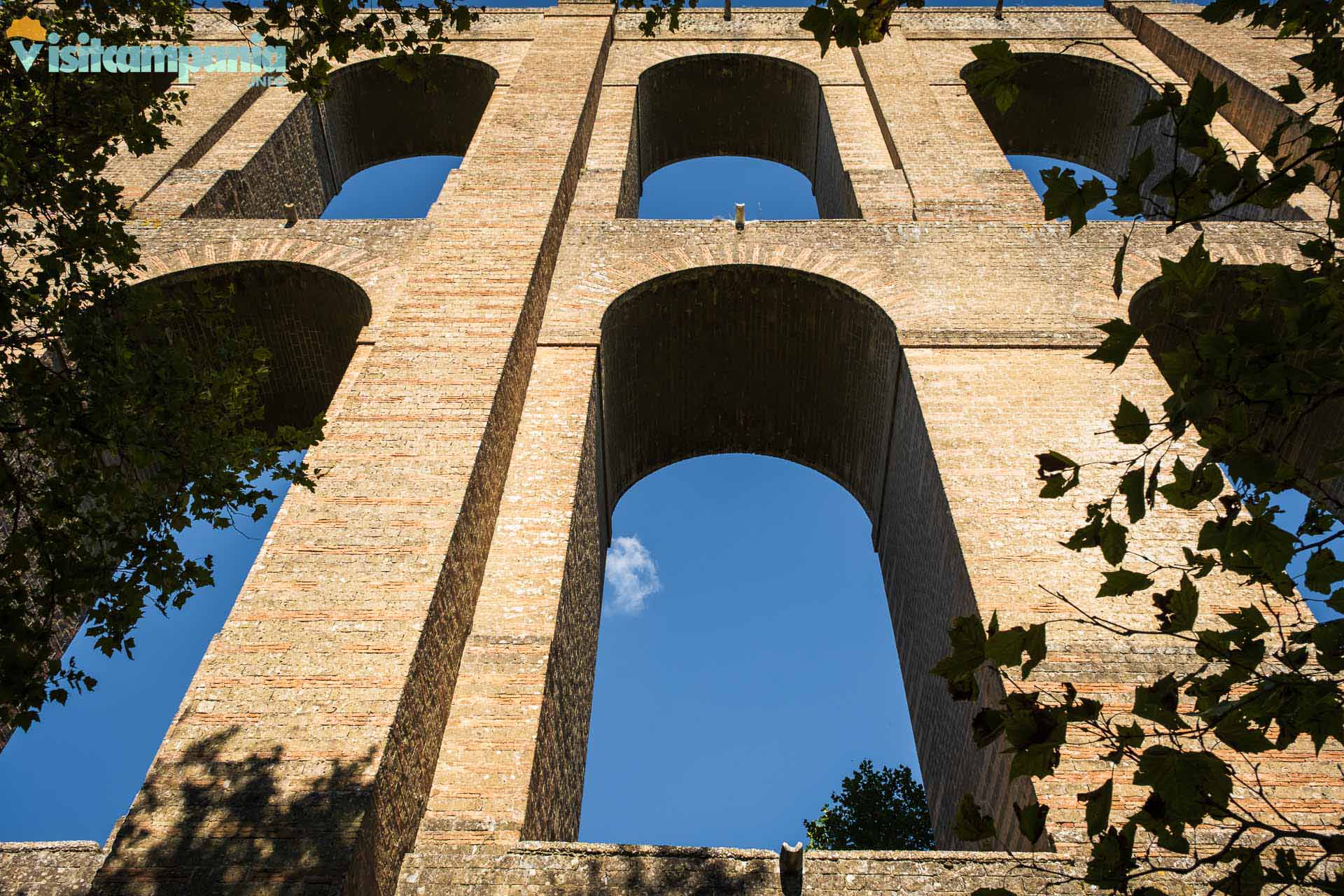
To build the pipelines, Vanvitelli had eight ironworks built in Calabria , along the Assi river. Although the aqueduct is mostly underground, in some sections it emerges supported by three canal bridges : the Ponte Carlo III in Moiano, the Ponte della Valle in Durazzano and the famous Ponti della Valle in Valle di Maddaloni , a monumental structure recognized at European level as an icon of the engineering of the time.
The branches of the aqueduct
The Carolino Aqueduct was not only the heart of the Royal Palace of Caserta, but also a vital resource for many nearby towns. Its waters fed the park and the magnificent fountains of the Royal Palace, as well as the historic silk mills of San Leucio and the Royal Delizia of Carditello . In San Leucio , the water powered the “water wheel” of the Belvedere silk mill , created by Ferdinand IV for the production of silk. It is still possible to see the cistern designed to distribute the water from the aqueduct and operate the machinery. Another branch of the aqueduct started from the Fountain of the Dolphins, crossed the Old Woods of the Royal Palace and reached the Royal Site of Carditello, providing hydraulic energy to mills and factories along the way. Finally , an ambitious project even envisaged extending the aqueduct as far as Naples : for this purpose, the ” Trunco di San Benedetto ” was created, which carried water from the Royal Park to the Carmignano Aqueduct , to bring it to the city.
What to see of the Carolino Aqueduct
The Carolino Aqueduct is a masterpiece of hydraulic engineering that has fascinated Europe since its construction and, surprisingly, is still in operation today . But don’t expect a classic monument: here functionality dominates over aesthetics . Many structural elements such as towers, pipes and bridges are not accessible to the public , except on rare special occasions. However, there are several points from which you can admire some suggestive architectural details , such as the majestic Ponti della Valle, or follow the path of the underground pipes that emerge from the inspection towers. Here is a guide to the main access points to the aqueduct : all free and open to the public, they offer an alternative look at the Bourbon past of the region.
Bridges of the valley

The Ponti della Valle are one of the most impressive engineering marvels of the 18th century. This monumental viaduct, designed by Luigi Vanvitelli, was built to bring water from the Benevento springs to the Royal Palace of Caserta, crossing the Maddaloni Valley and connecting Mount Longano (Beneventan side) to Mount Garzano (Caserta side) . With its 5,29 meters of length and a height of up to 55.80 meters , the work is inspired by ancient Roman aqueducts , with a structure of three orders of arches supported by 44 square-plan pillars. Inside, the passages form light galleries that facilitate the control of the water system. When it was completed, this viaduct was the longest bridge in Europe and has withstood three earthquakes, testifying to the solidity of its construction. On the Benevento end , you will find a hydrometric station to monitor the water flow and an open space from which to observe the upper walkway of the Bridges , delimited by embankments and almost two meters wide, which extends to Mount Garzano. Near this point there are also the remains of an old mill , born as an ironworks and transformed into a hydroelectric plant that supplied light to Caserta . From here a cycle/pedestrian path starts, dotted with inspection towers, which follows the route of the aqueduct. At the base of the bridge , on the side of Mount Longano, there is a monument-ossuary from 1899, in memory of the fallen of the Battle of the Volturno. Climbing Mount Garzano , you can admire the arch with the commemorative plaques of the aqueduct and enjoy splendid panoramic points. Finally, the Bridges are visible in all their grandeur also from various points of Valle di Maddaloni , for a truly breathtaking view.
Charles III Bridge

The Charles III Bridge, also known as the New Bridge, is the first of three bridges built along the Carolino Aqueduct. Located between the municipalities of Moiano, Airola and Bucciano, on the Isclero River , this bridge made of tuff and limestone ashlars extends for about 130 meters and reaches a maximum height of 6 meters , with four rusticated arches. Designed to maintain a constant flow of water, the bridge has no real upper walkway ; the walking surface is the extrados of the stone vault, without side banks. Two commemorative plaques dedicated to Charles of Bourbon and Maria Amalia of Saxony mark the beginning of the work on the aqueduct in 1753, an event celebrated with a royal visit. Surrounded by lush vegetation, the bridge is partially hidden and can be reached by crossing a private field . Nevertheless, a visit to this extraordinary feat of engineering, designed by Luigi Vanvitelli, is an experience that enriches one’s knowledge of the aqueduct.
The Durazzano Valley Bridge

The Ponte della Valle di Durazzano, also known as Ponte Tagliola , is the second of the three bridges of the Carolino Aqueduct and is located in the municipality of Durazzano. This fascinating structure crosses a deep gorge , carved into the yellow tuff, dating back to ancient volcanic activity. With a length of 60 meters , the bridge connects the provincial road “Durazzano – Sant’Agata de’ Goti” to the slopes of Mount Longano, gracefully crossing the Martorana torrent . Inaugurated on 30 April 1760 during the reign of Ferdinand IV, the bridge is notable for its four round arches supported by buttresses of different heights, with the main arch soaring 16 meters above the torrent . Although it does not bear an official dedication to Ferdinand IV, due to the opposition of the minister Bernardo Tanucci , it remains a tribute to the genius of Luigi Vanvitelli. Next to the bridge is Torrino 28 , built for the “water exhibition” in 1762. Vanvitelli also designed a drain to divert water into the Martorana torrent, keeping the conduit towards Caserta dry to facilitate the work. Surrounded by lush vegetation, the bridge is partially hidden, but the upper walkway, safe and well-defined, is easily accessible . You can reach it easily from the provincial road 33, where the bridge intersects with the road.
Sources of the Fizzo
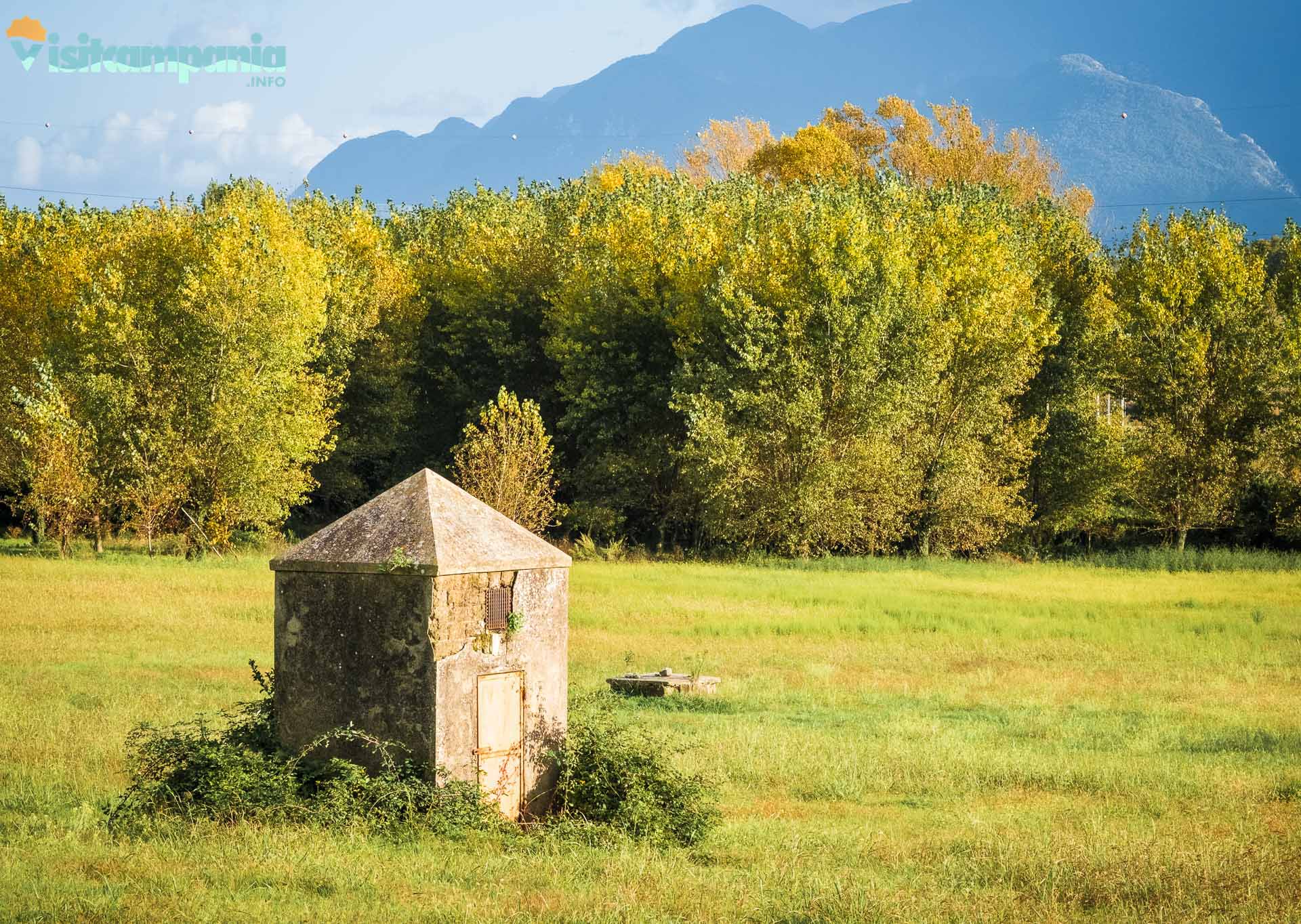
When designing the Carolino Aqueduct, Luigi Vanvitelli had an ambitious dream: to find a water source capable of supplying not only the Royal Palace of Caserta, but also a large water system. Following the traces of the ancient Roman aqueduct Aqua Iulia , which once supplied Capua, he discovered the ideal source on the lands of the Duke of Airola, on Mount Taburno, precisely in the Fizzo area . The strategic value of these resources led King Charles of Bourbon to elevate Airola to the rank of city on 2 August 1754 , in recognition of the exploitation of the Bucciano springs. The water was collected in two collectors, Carcarella and Ficucella, and channeled into a single conduit towards the Royal Palace of Caserta . Right at the beginning of the aqueduct is the first of 67 small towers , designed to inspect and ventilate the underground conduit. Near the sources, a water mill was also built, a symbol of the economic and technical importance of this extraordinary work. Although the springs, protected by walls, are not open to the public , the history surrounding them represents a fascinating journey into the great Bourbon enterprise.
Cycle and pedestrian paths

In 2021, public funds were allocated for the creation of a cycle/pedestrian path along the “water route traced by the Carolino Aqueduct” , but unfortunately at the moment only a few passable sections remain, some abandoned wooden sheds and information signs. One of the most evocative sections , immersed in chestnut woods, is the one that starts at the foot of the Ponti della Valle and reaches the tower 41. Five kilometers of asphalt and almost entirely flat, apart from the first short stretch of ascent towards the Ponti walkway, along the slopes of Mount Longano to discover evocative landscapes. Find out which other sections you can travel.


